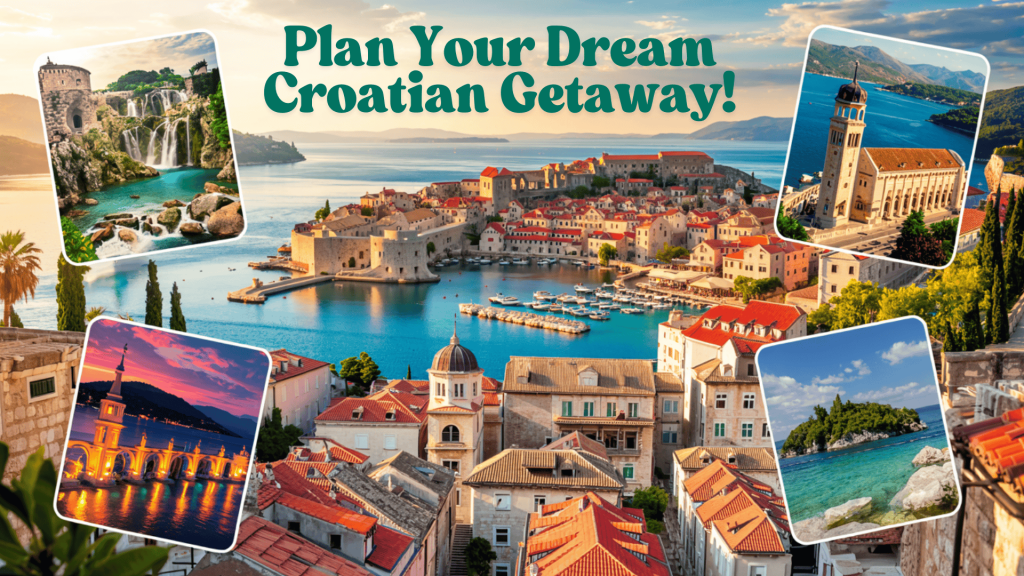The moment your feet touch Croatian soil, something changes. Maybe it’s the salty air carrying hints of lavender and pine. Maybe it’s the way sunlight plays on stone walls that have stood for centuries. Whatever it is, Croatia has a way of casting a spell on visitors.
Most travelers return home with stories they can’t stop telling—of swimming in water so blue it seems unreal, of meals that stretched for hours as the sun set over island peaks, of local wines that paired perfectly with fresh-caught fish.
Croatia waits for you with its mix of hidden coves and busy town squares, quiet mountain trails, and lively coastal markets. It’s a country where each day can bring something completely new. Ready to create your own Croatian story?
How to Plan a Trip to Croatia: Key Things to Know Before You Go
Picture yourself walking along ancient stone streets, the scent of fresh seafood in the air, and the gentle splash of crystal-clear waters against sun-warmed rocks. Croatia calls to travelers with its magic, but making the most of your visit starts with smart planning.
- When to Visit: The sweet spot for visiting? May- June or September- October. You’ll enjoy warm sunshine and swimming weather without fighting through crowds or paying peak prices.
- Travel Basics: Before packing, check your papers! EU citizens just need an ID card, while others should have a passport valid for at least three months beyond your stay.
- How Long to Stay: City lovers can enjoy Zagreb or Dubrovnik in 3-4 days. Beach fans should plan 5-7 days for coastal areas. While, the true Croatia fans wanting to see it all should set aside 10-14 days.
Getting there and around is simple with flights to major cities, reliable buses connecting towns, regular ferries to islands, and rental cars for those who crave the freedom to wander.
Best Croatia Itinerary Ideas
Not sure how to map out your Croatian vacation? Here are some perfect routes based on how many days you have to spend in this beautiful country. Mix and match these ideas to create your own perfect trip!
1. Quick 5-Day Dash
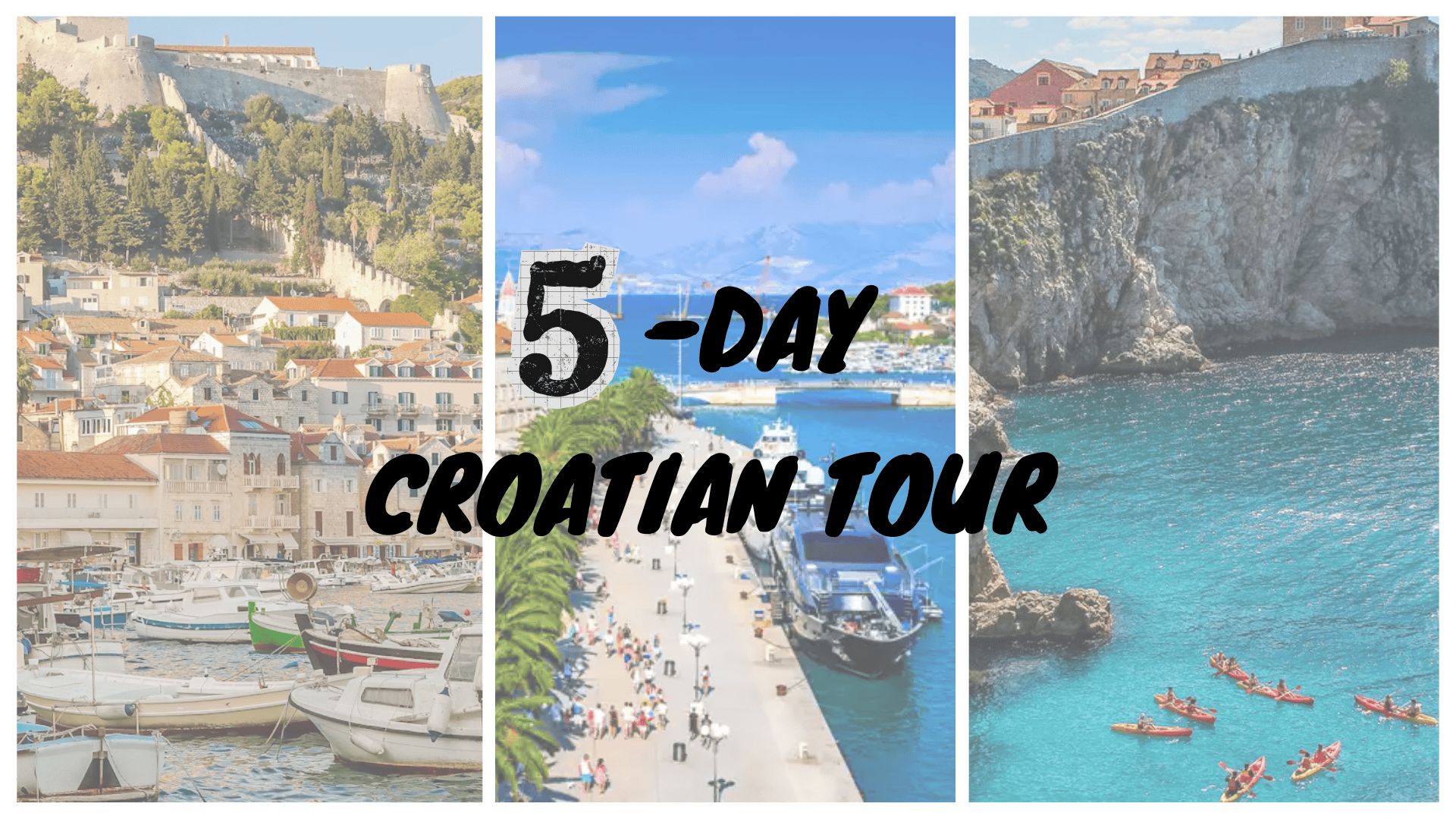
Days 1-2: Dubrovnik – Wake up to old city walls and bright blue waters
Day 3: Split – Roman ruins and buzzing cafés by the sea
Days 4-5: Hvar – Soak up the sun on this beautiful island
2. Classic Week (7 Days)
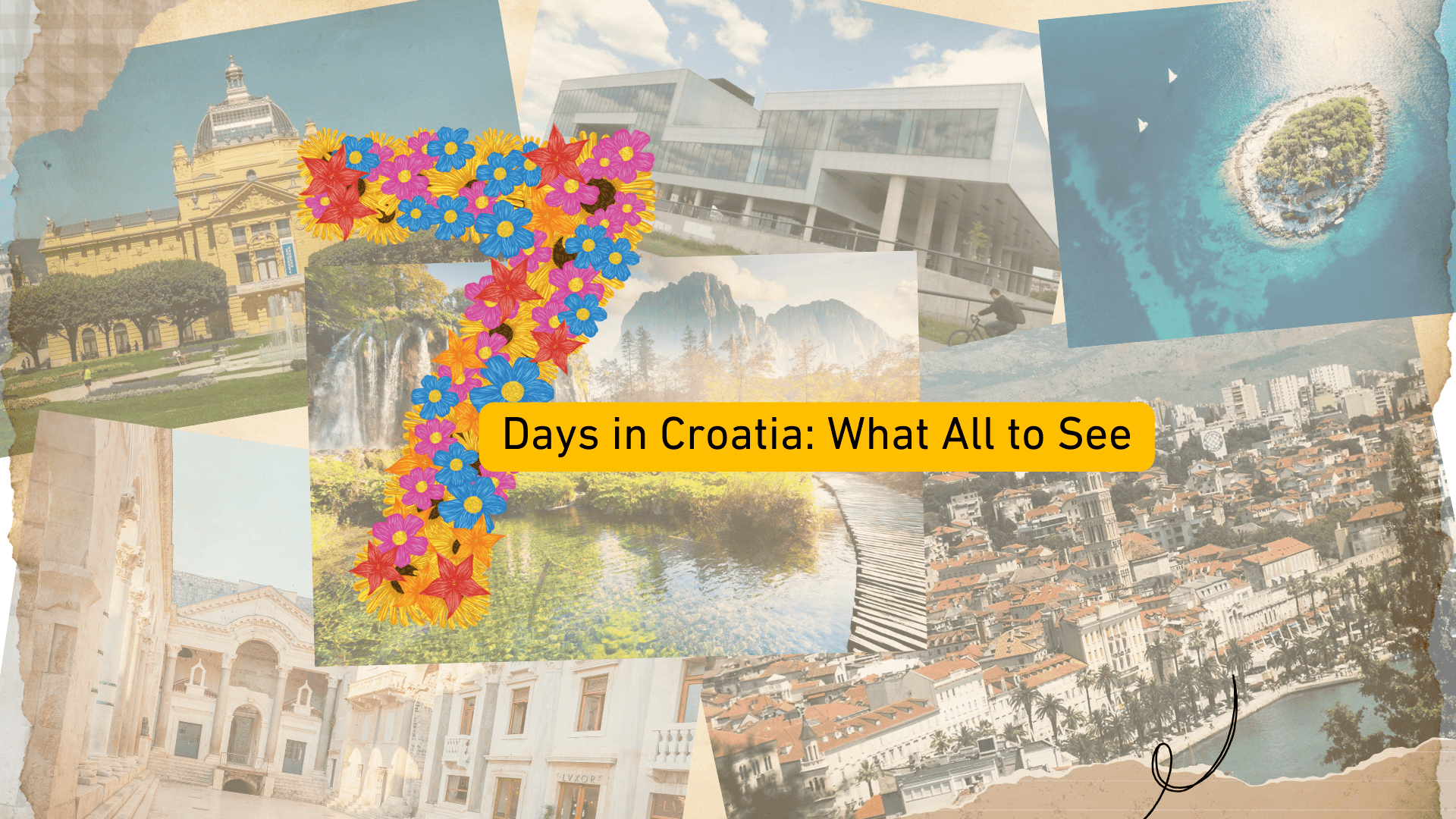
Days 1-2: Zagreb – Start in the capital with coffee culture and museums
Day 3: Plitvice Lakes – Wooden paths over turquoise pools and waterfalls
Day 4: Split – Step back in time among ancient stones
Days 5-7: Island hopping – Hop to Brač, Hvar, or Korčula
3. Full Tour (10 Days)
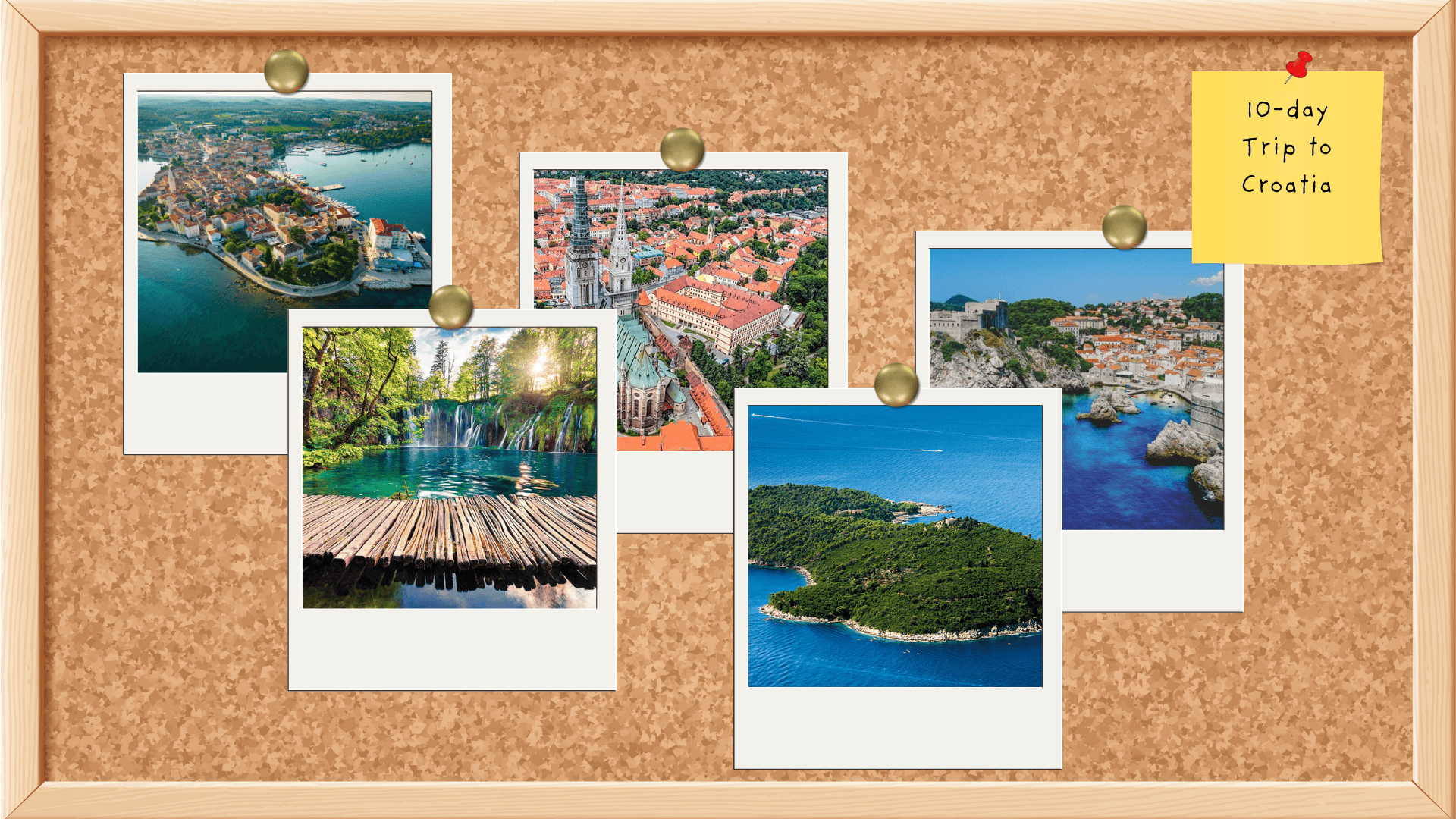
Days 1-2: Zagreb – City charm and hidden courtyards
Days 3-4: Istria – Truffle hunting and hilltop towns like Motovun
Day 5: Plitvice – Nature at its finest
Days 6-7: Split & Trogir – Coast living at its best
Days 8-10: Dubrovnik & islands – End with the “Pearl of the Adriatic”
If you stretch your trip to 14 days, the real magic happens as you wander through the less-visited corners of Croatia, from Šibenik with its stunning stone cathedral to the rugged paths of Paklenica, the bird-filled wetlands of Kopački Rit, and the peaceful, sun-dappled bay towns of Istria where locals still outnumber visitors.
Top Places to Visit in Croatia You Shouldn’t Miss!
Croatia packs incredible variety into its modest size. From sun-soaked islands to ancient walled cities and thundering waterfalls, this country spellbinds visitors with its stunning beauty and rich history. Here’s your guide to the must-see spots that make Croatia truly special.
Coastal Magic
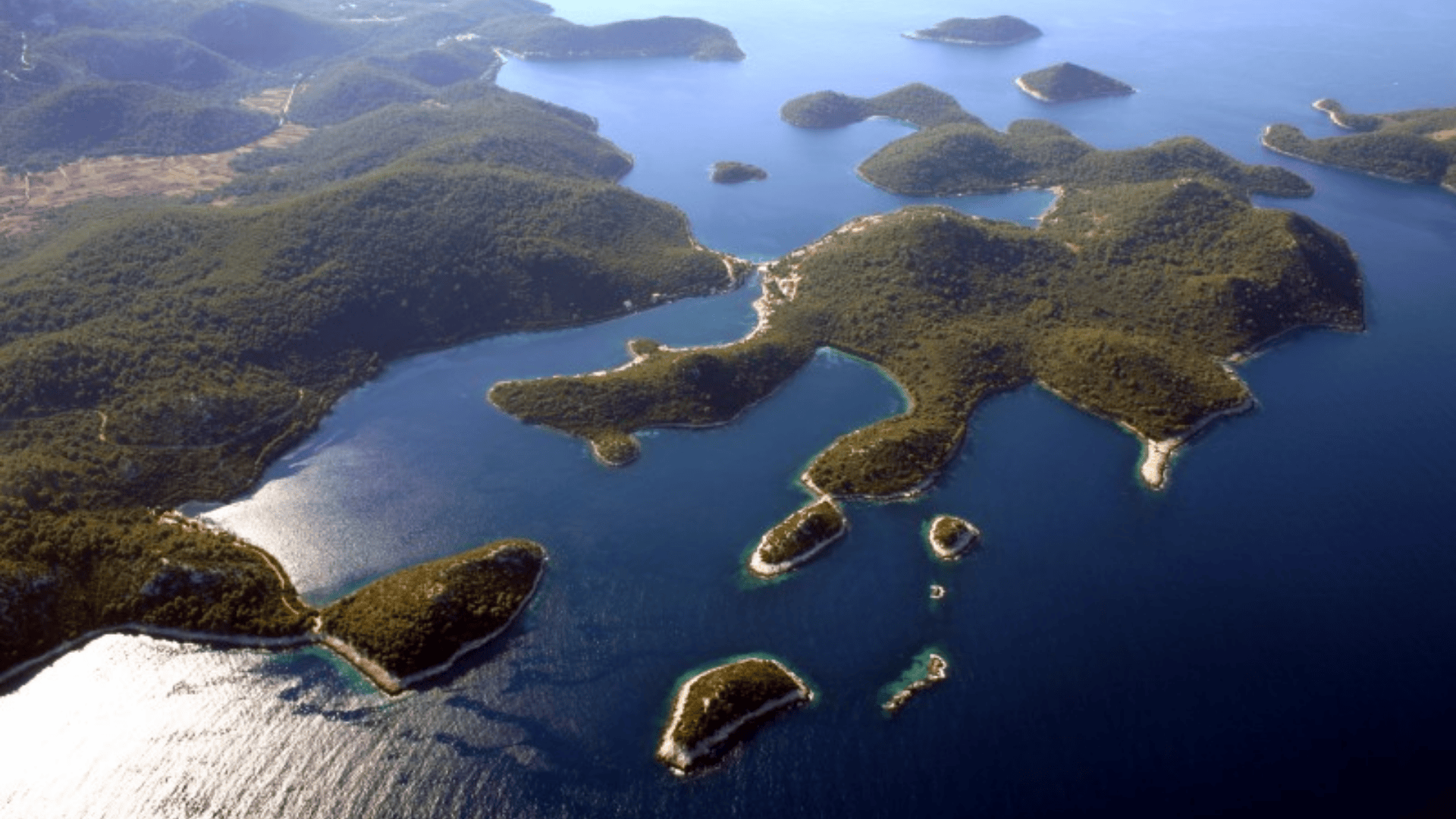
The shores of Croatia offer distinct experiences, each with its own character and charm:
- Southern Dalmatia – Dramatic cliffs, historic walled towns, and the clearest waters in the Adriatic
- Central Dalmatia – Roman ruins, busy harbors, and family-friendly beaches
- Northern Dalmatia – Quieter coastal spots with national parks nearby
- Istria – Italian-influenced culture with rolling hills, truffles, and pretty fishing villages
Island Life
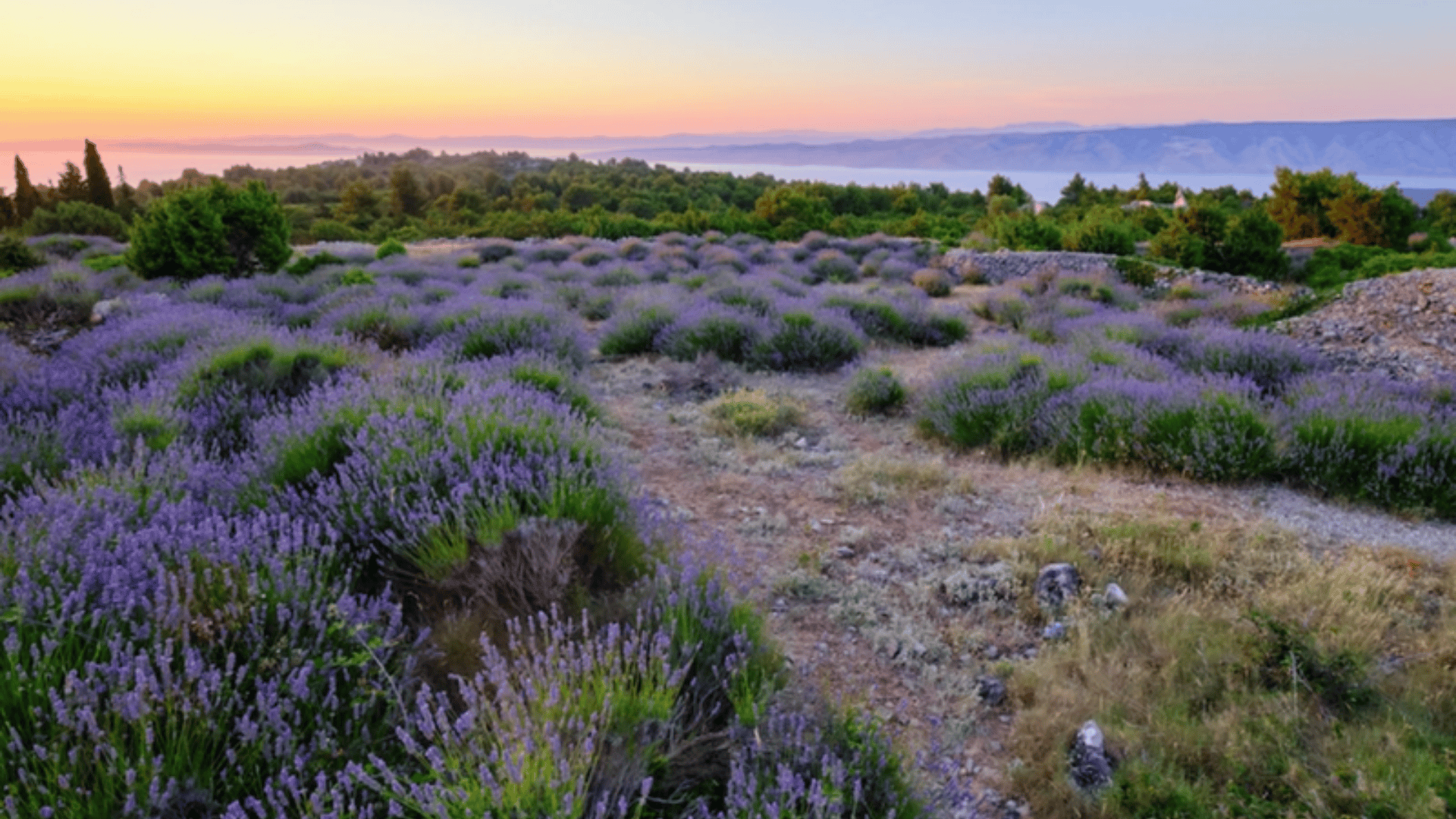
Croatian islands float like jewels in the Adriatic, each with unique appeal:
- Hvar – Lavender fields, buzzing nightlife, and hidden beaches away from the main town
- Vis – Remote beauty, scrumptious meals, and the famous Blue Cave nearby
- Brač – Home to the shape-shifting Zlatni Rat beach and charming stone villages
- Korčula – Medieval walled town, excellent white wines, and quiet coves
City Treasures
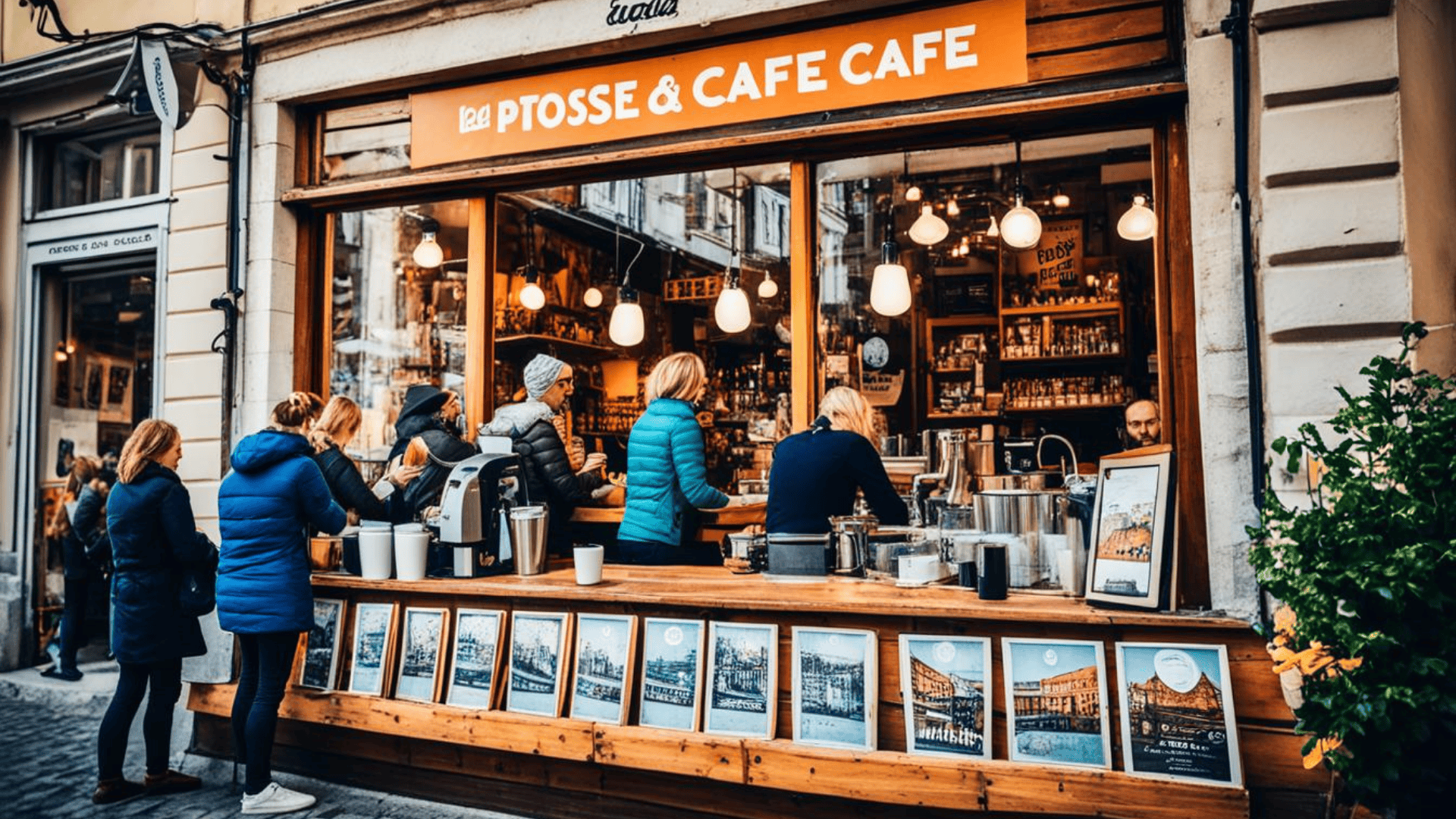
Croatia’s cities blend history with vibrant modern life:
- Rovinj – A picture-perfect fishing town with winding cobbled streets and flavorful seafood
- Dubrovnik – The “Pearl of the Adriatic” with massive walls and marble streets
- Split – Roman palace turned living city, with buzzing waterfront and beaches
- Zagreb – Coffee culture, museums, markets, and pretty Upper Town with red roofs
Nature’s Wonders

Beyond beaches, Croatia’s natural beauty will take your breath away:
- Plitvice Lakes – Sixteen lakes connected by waterfalls, with wooden walkways throughout
- Krka Waterfalls – Similar beauty to Plitvice but with swimming allowed in certain areas
- Paklenica – Stunning hiking through limestone canyons
- Mljet National Park – An island with saltwater lakes and ancient forests
Where to Stay in Croatia?

Finding the perfect spot to call home in Croatia can turn a good trip into something you’ll talk about for years. Let’s jump into your options across this stunning country.
1. Coastal Towns vs. Inland Escapes
The sun-soaked Croatian coast offers countless gems where history meets turquoise waters. In Split, morning coffee spots sit tucked against 1,700-year-old Roman walls. Just down the coast, Makarska hides between mountain shadows and clear bays perfect for morning swims.
“My best days in Croatia were in a tiny stone house on Vis island,” shares Thomas from London. “The fishing boats went out at dawn, and we bought our dinner straight from them when they returned.”
Meanwhile, inland Croatia tells a completely different story. Zagreb hums with street musicians and museum-goers, while the rolling hills of Zagorje hide thermal springs and family wineries where tastings often turn into long dinners with the owners.
2. Types of Places to Stay
Family-run guest houses offer the warmest welcome – often with homemade rakija (fruit brandy) upon arrival. Old town apartments put history at your doorstep, though the charm of centuries-old stone walls comes with quirks – narrow stairs, compact kitchens, and sometimes nightlife noise drifting through windows.
Country homes shine for group trips. A restored farmhouse in Istria with its own olive grove offers space to spread out, lazy pool days, and skies dark enough to see every star.
3. Tips for Booking and Finding the Best Spots
- Book 6+ months ahead for summer or try May/October for better rates
- Budget for sojourn tax (€1-3 daily per person)
- Check ferry schedules for island stays
Smart travelers know to ask hosts about weekly discounts, which often knock 15-20% off your total. When booking in old towns, request quiet rooms away from main squares, as stone streets can echo with nightlife until late. Remember to ask your host where they eat—their recommendations can lead to meals at half the price of spots in tourist guides.
From lighthouse keeper’s cottages on remote islands to sleek city lofts, Croatia’s places to stay tell as many stories as the country itself.
Local Food, Cultural Experiences, & What to Do in Croatia
The soul of Croatia lives in its kitchens, vineyards, and centuries-old traditions. One bite of black risotto or a sip of island wine, and you’ll understand why locals say “the stomach leads the heart.”
Must-Try Dishes & Hidden Food Gems
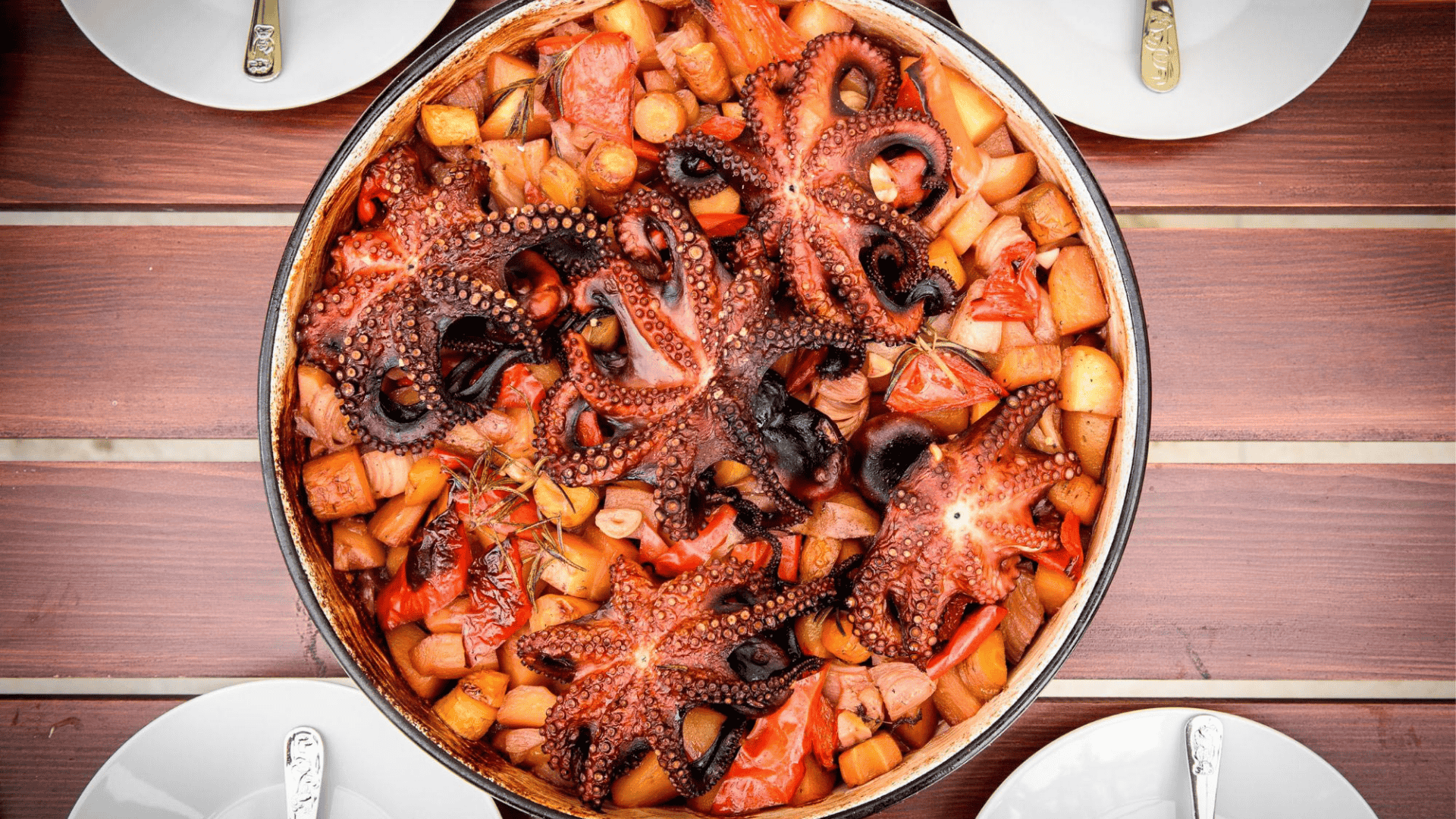
At a small konoba (tavern) in Dalmatia, watch fishermen bring in the day’s catch while waiting for your peka – meat or seafood slow-cooked under a bell-shaped lid covered with hot coals. This centuries-old cooking method turns octopus tender as butter after three hours of patience.
Inland Croatia serves hearty dishes that tell stories of survival and celebration. In Zagreb’s Upper Town, hunt down štrukli – pillowy cheese-filled pastry swimming in cream that grandmothers still fight over at family gatherings.
Skip tourist-trap restaurants by following this golden rule: look for places with handwritten menus (they change based on what’s fresh) and locals filling the tables. Your meal will cost half as much and taste twice as good.
Sips & Tastes That Tell Stories
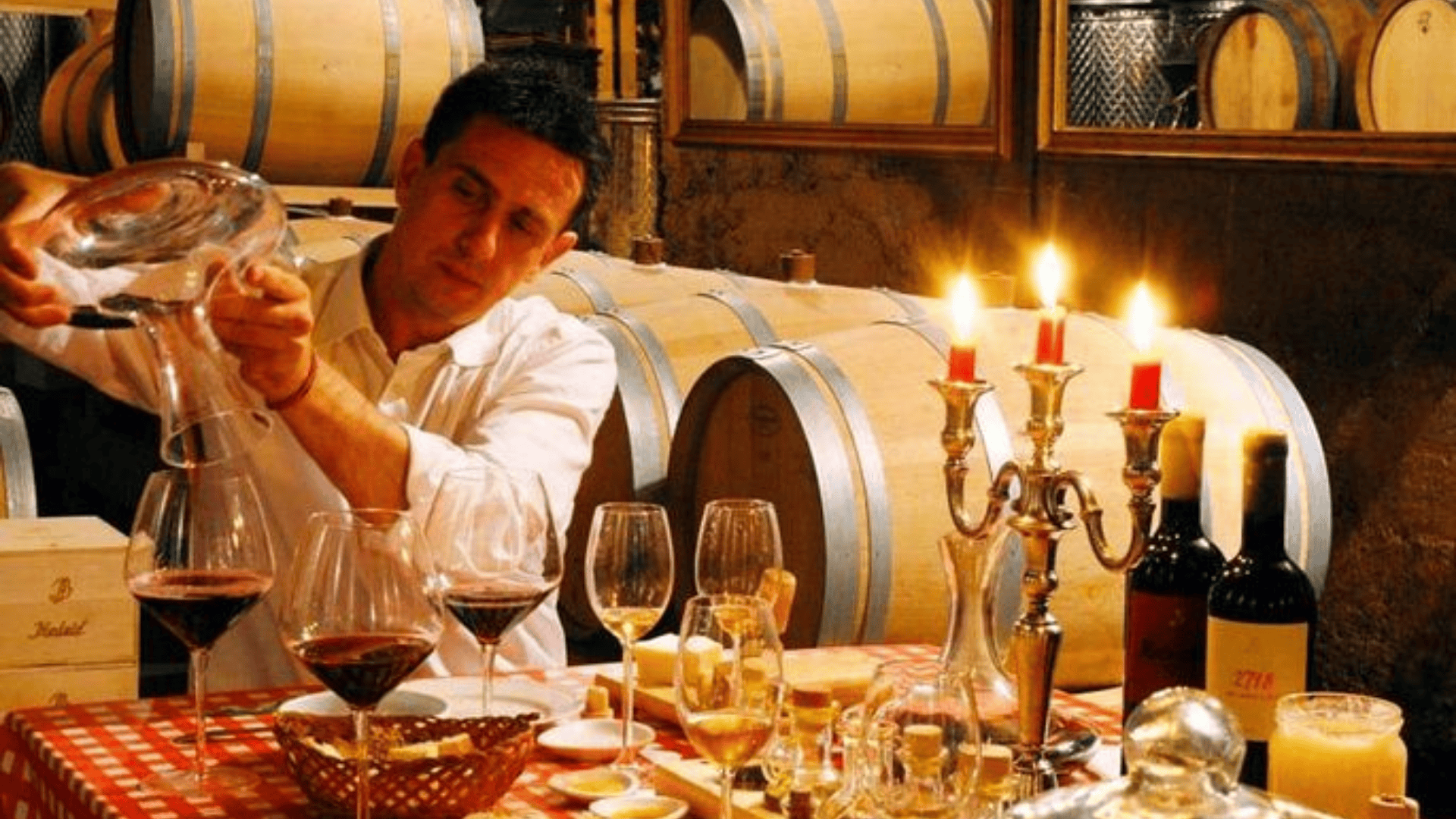
Croatia hides over 130 native grape varieties in its soil. On Hvar, tiny wineries perched on impossibly steep slopes offer tastings of Plavac Mali, cousin to California’s Zinfandel.
In Istria, family winemakers pour Malvazija that tastes of the sea air, often alongside homemade cheese and prosciutto. Truffle hunting in Istria’s forests turns breakfast into treasure hunting.
Join local hunters and their trained dogs at dawn, then feast on scrambled eggs topped with your found treasures. These underground mushrooms fetch hundreds of euros per kilo but land on your plate for a fraction of the price at the source.
Beyond Beaches: Experiences That Stay With You
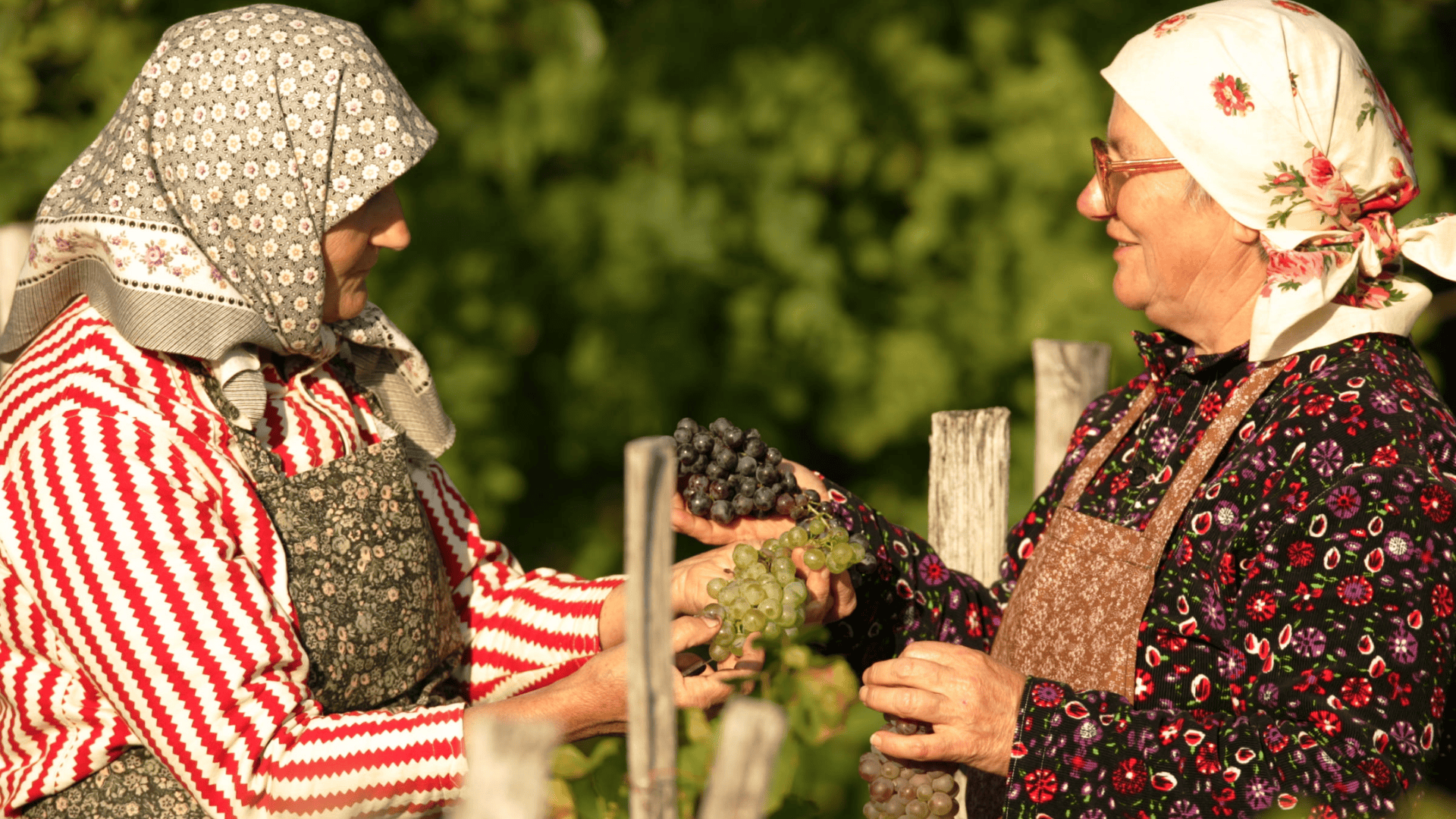
- Dawn Paddle, Golden Walls – Glide silently by kayak along Dubrovnik’s massive fortifications as sunrise paints them gold. The morning silence lets you hear waves lapping against stones laid centuries ago.
- Hands in Earth, Hearts in Song – Join harvest traditions in Slavonia, where picking grapes by day leads to night feasts with local families sharing food, wine, and folk songs passed down for generations.
- Midnight in Roman Footsteps – Wander Split’s 1,700-year-old palace streets after dark when locals reclaim their ancient home and cats become your guides through lantern-lit passages.
Speaking Croatian: Connection Through Words

“Stranac koji govori hrvatski više nije stranac” – “A foreigner who speaks Croatian is no longer a foreigner.” This old saying proves true with each attempted word. Locals beam when visitors try even simple phrases, opening doors to experiences tourists rarely find.
Try “Hvala” (hvah-lah) for thank you, and watch service transform from good to heartfelt. “Živjeli” (zhee-ve-lee) means “cheers” and instantly turns strangers into drinking buddies. When meeting someone, “Drago mi je” (drah-go mee yeh) – “I’m pleased to meet you” – spoken with a smile breaks the ice faster than perfect pronunciation.
The most important cultural tip? Croatians never rush meals. Order, then settle in for a two-hour minimum experience. Waiters won’t bring your bill until asked – it’s not poor service, but respect for your conversation and enjoyment.
Croatia Travel Essentials

Planning a Croatian tour? This Mediterranean gem offers incredible value with its pristine beaches, historic cities, and breathtaking national parks. Here’s what to expect cost-wise and how to make the most of your trip.
Sample Budget Breakdown
| Category | Budget (€/day) | Luxury (€/day) | Pro Tips |
|---|---|---|---|
| Accommodation | 30-50 | 150-300 | Book early; consider locations outside tourist zones |
| Food | 20-30 | 70-100 | Try “marenda” lunch specials; many places are cash-only |
| Transport | 10-15 | 50-100 | Book ferries ahead; use BusCroatia.com; download Uber |
| Activities | 10-20 | 50-100 | Pre-book national parks; visit museums during discount hours |
*7-Day Total: €560-875 (Budget) to €2,590-4,550 (Luxury)
Common Traveler Mistakes and How to Avoid Them
- Visiting Only During Peak Season: During July and August, prices soar and crowds multiply. Consider traveling in May, June, September, or early October when the weather is still pleasant, the Adriatic is warm enough for swimming, and you’ll encounter fewer tourists.
- Underestimating Costs: Croatia isn’t as budget-friendly as some might expect. Particularly in Dubrovnik and popular islands like Hvar, prices can rival Western European destinations. Budget accordingly and look for accommodation slightly outside the main tourist zones.
- Staying in One Place: Many visitors make Zagreb, Split, or Dubrovnik their only stops. Croatia’s charm lies in its diversity—from the Italian-influenced Istrian Peninsula to the stunning Plitvice Lakes and lesser-known islands like Vis or Lastovo.
- Not Booking Ferries in Advance: During the high season, ferry tickets to popular islands sell out quickly. Book at least a few days ahead through Jadrolinija’s website to secure your spot, especially if you’re traveling with a vehicle.
- Assuming Credit Cards Are Accepted Everywhere: While larger establishments accept cards, many smaller restaurants, cafes, and attractions are cash-only. Always carry some Euros (Croatia’s official currency since 2023).
Closing Notes
As you put the pieces of your Croatia trip together, remember that the best moments often come when plans make room for surprise.
Maybe it’s a small family restaurant you find down a side street, a local festival happening just as you arrive in town, or a quiet beach spot a friendly host tells you about.
Croatia rewards the curious traveler. Pack your sense of wonder alongside your swimsuit and walking shoes. Bring questions for locals, who are often happy to share their favorite spots.
Keep space in your plans for those unscheduled hours that so often become the highlight of any trip. The red-roofed towns, crystal waters, and green hills of Croatia are waiting.
Check back soon for more destination spotlights, packing advice, and outdoor travel ideas.

